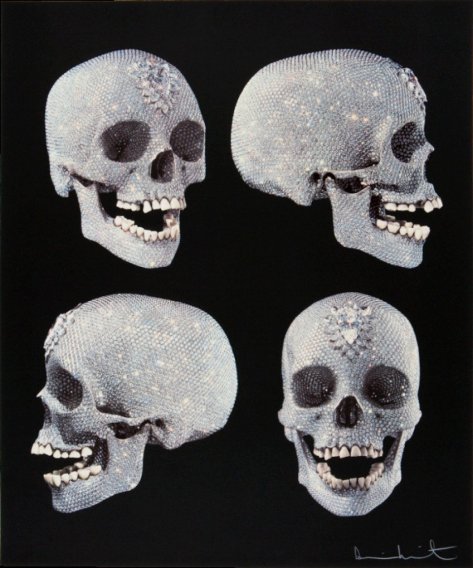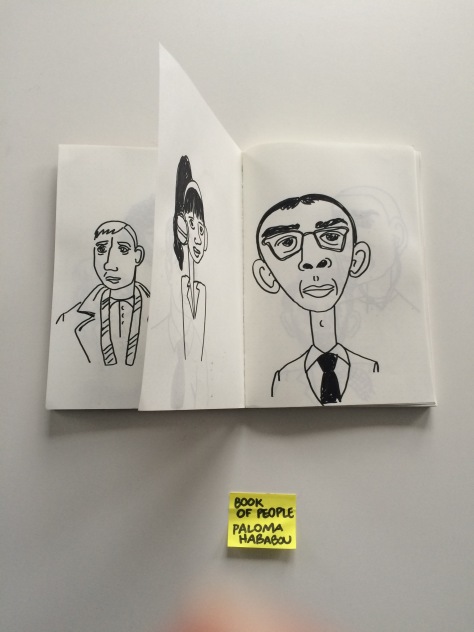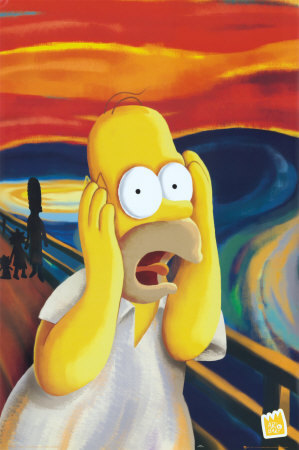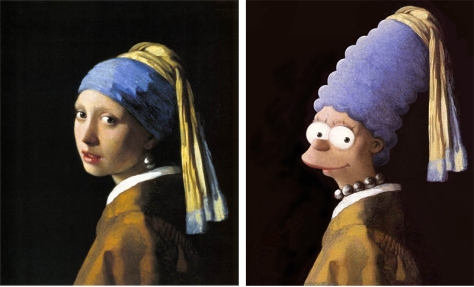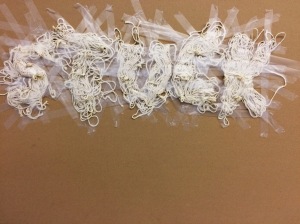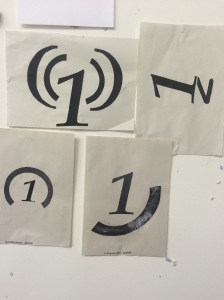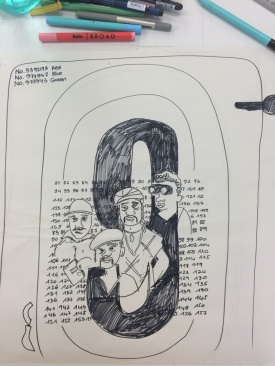In 1993, Haddaway sings « What is love, baby don’t hurt me no more » embodying the philosophical question that has been torturing artists and writers since Eve munched that apple.
Tristan & Iseult, Romeo & Juliette, Tony & Maria, Peter Parker & Mary Jane, Kate Middleton & Prince William are as many famous couples that have forged our representation of Love. However do we really know what effects has love on our body and mind? Albert Einstein would complain « How on earth are you ever going to explain in terms of chemistry and physics so important the biological phenomenon as first love ». The truth is… Who hasn’t wished to understand love so that they won’t call their ex at 2 am in the morning again?
What if an exhibition shoulder the responsibility of explaining love? Hence asking the question « How do you curate a feeling ? ». Worse, a feeling that has as many definitions that there are people on this planet! Therefore, in this essay, I will propose an exhibition that tries to explain the phenomenon of Love.
First, I’ll be looking at the place of the exhibition, its content and the feeling I want to communicate to the audience. Then, I’ll be exploring what I believe is the most suitable curation method to attend this feeling. Finally, we will look into the educational function of museums.
To begin, I had to ask myself where such an exhibition could take place? An art Museum wouldn’t have the resources to give an answer to the public. It would simply show different representations of love, focusing more on History of Art than on the chosen theme. Thus, I looked into museums for whom learning was a priority. On the science museum website sciencemuseum.com, Ian Blatchford (director of the Science Museum group) declares « our mission is to feed the public’s appetite for making sense of the latest ideas in science, technology, engineering and medicine and how these impact on society ». That’s why I chose to display my exhibition in the Science Museum, more precisely in the Wellcome Wing Gallery (added to the museum in 2000). In the Science Museum Souvenir Guide (2014, p.16), Jack Challoner writes « The Wellcome Gallery pose important questions about contemporary issues through innovative displays ». Perfect! Now I have to search for the materials and appropriate display that would allow me to answer to the question « What is Love ? ». In Museum Exhibition, David Dean divides the development of an exhibition into three roles: the curator, educator, and designer:«the curator does research and select the appropriate collection of objects to guide interpretative planning», « the educator advises about educational needs and develop information ». Finally « the designer translates the subjects, objects and ideas into visual form ». These are the three roles I will put on through the development of the exhibition.

I see this exhibition as an opportunity to learn: « exhibitions arouse and satisfy curiosity, leading to continued and growing interests » (Museum Exhibition, 2002 p.22). Therefore, how to make an exhibition attractive to visitors? David Dean believes « the exhibit environment is the primary medium of communication ». I truly want my exhibition to provide a meaningful experience. He recommends « a complementary employment of both sides of the brain to enhance learning « (p.30) wich means coupling logic, analytic reasoning (left brain) with pictures, sounds, smells and touch (right brain). (p.30)
From the beginning, I want to capture the public attention and create a feeling of excitement (similar to going to a movie), that’s why I though I would enlight the entrance with pink spots (to remind the colour of love). When choosing my content, I needed to think what objects would « provide the information necessary for learning to occur » (p.2). The content can be divided into three categories. The first category focuses on the artistic representation of Love in Art. The idea is to gather into the Science Museum the most famous paintings, sculpture, photography and movie scenes of Love (Klimt, Lichtenstein, Fragonard, Man Ray, Marcel Duchamp, Robert Doisneau, Rodin, Brancusi, Fellini etc) (cf. catalog).

Then, I choose to expose a collection of objects that explains the science behind the concept of love. For example, in the Museum of Arts et Métiers (Paris 3eme arrondissement), you can see the machine at the origin of the french expression « Coup de Foudre » wich means « love at first sight » and that you would translate in English «struck by lightning »). In 1770, scientists run experiences with a machine that generates static electricity. The machine has two ends, where two people lean towards each other, an electrical arc passes between their lips and creates an electric shock!
 This category also includes informative boards, videos, and models that explain the impact of love on our body. It is the category where the role of the designer is the most important. The designer will have to find a simple and playful way to expose numbers and complex scientifical processes and experiences. Like the functioning of neurotransmitters in the stage of attraction (adrenaline, dopamine, serotonin), or what is called the « cuddle hormone » Oxytocin.
This category also includes informative boards, videos, and models that explain the impact of love on our body. It is the category where the role of the designer is the most important. The designer will have to find a simple and playful way to expose numbers and complex scientifical processes and experiences. Like the functioning of neurotransmitters in the stage of attraction (adrenaline, dopamine, serotonin), or what is called the « cuddle hormone » Oxytocin.
I thought the exhibition « Happy Show » that occurs in Paris La Gaité Lyrique in 2014 was a good example of an efficient design. The graphic Stefan Sagmeister invites the public to embark on the exploration of sensorial and intellectual happiness through graphic illustrations and experiences.
You can see a describing video of the exhibition on https://gaite-lyrique.net/en/exposition/the-happy-show
Finally, I wanted to import an installation by the french artist Charles Pétillon called Heartbeat. Famous for invading empty space with white balloons, he was commissioned in 2015 by London Covent Garden market building. On designboom.com, you can read that « The balloons weave their way through the south hall, stretching to a total length of 54 meters… the installation also incorporates gently pulses of white light, designed to reflect the heartbeat of the market. » In my opinion, installations are an extraordinary blend of art and technology. Also, it allows even more interaction with the audience.

 Through the entire visit (except in Chatillon and movie scenes rooms), the public will be listening to music about love from Edith Piaf to Puff Diddy, West Side Story or Marvin Gaye (cf.Playlist): I believe the music will participate in bringing the subject matter to live.
Through the entire visit (except in Chatillon and movie scenes rooms), the public will be listening to music about love from Edith Piaf to Puff Diddy, West Side Story or Marvin Gaye (cf.Playlist): I believe the music will participate in bringing the subject matter to live.
- Queen, Somebody to Love (1976)
- Bee Gees, How Deep Is Your Love (1977)
- Bee Gees, More than a woman (1977)
- The Police, Every breath you take (1983)
- Chris Brown, Forever (2007)
- Celine Dion, My Heart will go on (1997)
- Otis Redding, This Arms of Mine (1964)
- Bonnie Tyler, Total Eclipse of The Heart (1983)
- The Police, I want to know what love is (1979)
- Michael Jackson, Remember The Time (1991)
- Elton John, Your song (1979)
- Whitney Houston, I will always love you (1979)
- Al Green, Let’s stay together (1972)
- Bill Withers, Ain’t no Sunshine (1971)
- The Temptations, My Girl (1965)
- Marvin Gaye, Sexual Healing (1982)
- Barry White, Can’t get enough of your love baby (1974)
- Barry White, You’re the first, you’re the last, My everything (1974)
- Ben. E King, Stand by Me (1962)
- Dusty Springfield, Son of a Preacher Man (1969)
- Neil Sedaka, Calendar Girl (1961)
- The Chi-lites, Have you seen her (1971)
- Mariah Carey, We belong together (2005)
- Percy Sledge, When a Man loves a woman (1987)
- Gloria Gaynor, I will survive (1978)
- Marvin Gaye & Tammi Terrell, Ain’t no mountain high enough (1967)
- The Exciters, Tell Him (1982)
- Barbra Streisand, My Man (1965)
- Beyoncé, Halo (2008)
- The Fugees, Killing Me Softly With His Song (1996)
- P. Diddy, Last Night (2006)
- Leona Lewis, Bleeding Love (2007)
- Bob Dylan, Make you feel my love (1997)
- Adele, Someone like you (2011)
- Janet Jackson,Together Again (1997)
- Edith Piaf, La Vie en Rose (1940)
- Louis Armstrong, La Vie en Rose (1952)
- Britney Spears, Oops!.. I Did It Again (1997)
- Frank Sinatra, L.O.V.E (1953)
- Nat. King Cole, Fly me to the moon (1944)
- Nancy Sinatra, Bang Bang (1966)
- Dalida & Alain Delon, Paroles (1972)
- Jimmy Fontana, Il Mundo (1965)
- Amy Winehouse, Back to Black (2006)
- Usher, You got it bad (2001)
- Big Sean, Beware (2013)
- Justin Bieber, Boyfriend (2012)
- The Cardigans, Lovefool (1996)
- Lionel Richie, Hello (1983)
- Haddaway, What is Love (1993)
- Rick Astley, Never Gonna Give You Up (1987)
- Evelyn Champagne King, Love Come Down (1982)
- Beatles, Something (1969)
- The Smith, There is a light (1992)
- Stevie Wonder, I just called to say I Love You (1984)
- Ray Charles, I got a woman (1958)
- Kylie Minogue, Can’t Get You Out Of My Head (2001)
- No Doubt, Don’t Speak (2003)
- Justin Timberlake, Cry me a river (2002)
- West Side Story, Tonight (1958)
You can see the display of those three categories on the plan underneath.
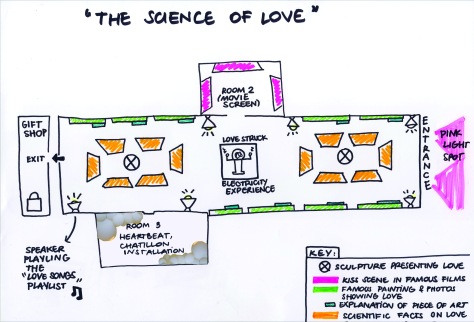
You can draw from the choice of my content a will to use a familiar language with popular music, famous images, and movie scenes. Indeed, Dean David advises in Audience and Learning (2002, p.28) to « preface an exhibition with something familiar and easily assimilated ». He believes that if the audience encounters unfamiliar or unreadable content, « they will feel diffident and uncomfortable ». While our goal is for learning to occur without duress or discomfort.
Furthermore, I want the exhibition to engage with the audience: « active participation over passive observation » (p.26). Far from Robert Storr belief of « Showing is telling » (What makes a great exhibition, 2006 p.23) I want the exhibition to engage with the audience.
What I’ve seen when visiting the Science Museum really assured me in my choice. I recognize the museum puts real efforts to communicate information. It is written in the Science Museum souvenir guide « the museum has been devoted to encouraging learning » (p.18): animated explanations, playful design and interactive ways of understanding are proposed in every gallery. Indeed, « the touching reinforces, confirms and adds to the information gained through the eyes ». (David, p.26)
The willingness to touch a wide audience goes back to 1920 when Sir Henry George Lyons (director at the time) had already seen the importance of popularizing science. He encouraged curators to tell stories and use real models. The Science Museum opened in 1931 the first Children’s Gallery in the world where children could understand scientific principles through working models!
The Science Museum manage to communicate with a wide audience (children and adults) without ever vulgarizing knowledge.
It is in the same state of mind, that I’ve tried to develop my exhibition proposal.
Love is a theme with large resources in different fields of knowledge (science, art, literature, psychology). I could have explored sexuality, neurology or reproduction. Also, the reason I chose a scientifical point of Vue over love rather than artistical: is because it seems that science museum has more liberty in their curation method than a classical art museum. When looking at science museums over the world, I’ve found extraordinary installations that could never see the day in Art museums.



However, if this exhibition were happening outside of this essay, I would have considered a less heterosexual and occidental representation of love: and tried to present other civilisations interpretation of love.

The choice of this theme was an opportunity to create a learning experience where complex phenomenon could be translated into accessible content. An engaging, thoughtful and entertaining exhibition where learning would occur easily and efficiently. I truly believe that museums succeed where school and family fail. Unlike books, museums have the talent to create interest from the most reluctant people. In The role of Museum in society (Curator, 2005 p357-363) George E. Hein proves that museums have a real influence on society. He gives the example of zoos, aquariums, and natural history museums around the world which « raise awareness, knowledge and active support for conservation of the flora and fauna of the earth ». In Art museums and the ritual of citizenship (1994, p.279-286), Carol Duncan shows that since the Enlightenment, museums have replaced the religious temples to offer « a secular truth ». Education has become museum’s responsibility « museums have the mission to provide places for education and reflection » (Museum Exhibition).
That’s why as a curator I could never simply display art in a room and leave the audience on her own. Of course, my personal opinion only brings up the eternal debate between the educational and the aesthetic functions of museums. However, the one thing that I’m sure off is that museums belong to the community and have the duty to serve the community’s needs.











































